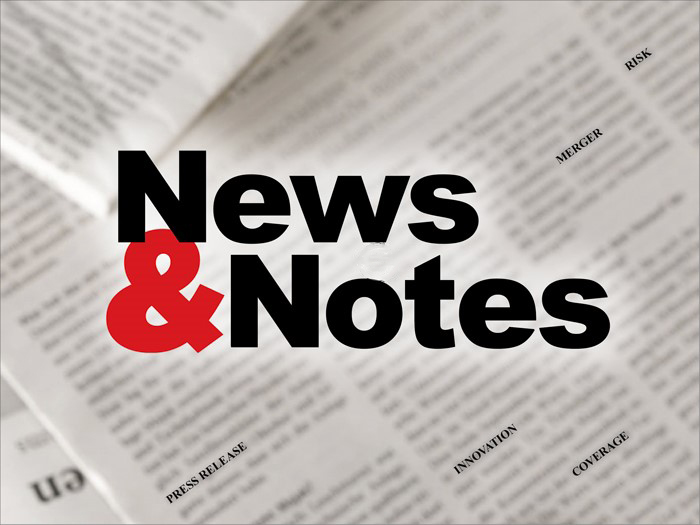Drug-Free Workplace
Solid Substance Abuse Program Can Combat Legal, Safety Issues

More than one-third of workers’ comp claims involve issues surrounding substance abuse, says a risk manager who specializes in workplace substance abuse prevention. Alcohol and drugs are also major contributors to work-related motor vehicle accidents.
Employers spend an estimated $7,000 per year per substance abuser in direct operational costs. With some estimates suggesting up to 20 percent of workers are substance abusers, organizations need to develop and implement clear and defensible programs.
“It’s not a moral or ethical issue, it’s a business decision,” said Christine Clearwater, president of Drug-Free Solutions Group, “and a very important one to decide where you want to position your company and communicate that to your organization.”
Failing to address the issue can not only land an organization in a legal quagmire but also puts the safety of the entire company at risk. In a recent webinar produced by the National Safety Council, Clearwater outlined the risks employers face and provided solutions.
Marijuana
In addition to states that allow recreational use of marijuana, 23 allow the drug for medicinal purposes. Clearwater said the effects of the drug can create safety risks in the workplace even two days after use.
While the person may feel “high” for several hours after smoking marijuana, THC, the active ingredient in marijuana, reduces pressure on the optic nerve and can alter depth perception for up to 48 hours.
“So a person works with machines and doesn’t know if something is 5 or 7 inches away,” she said. “If you drive a forklift you don’t know if something is 5 or 10 feet away. … Hundreds of studies show this.”
The fact that federal law still bans the use of marijuana is good news for employers. “In workers’ comp, most states don’t require payment for the injured worker if he is under the influence at the time of an accident,” Clearwater said. “At this point in time, the system is supporting the employer.”
Other Drugs
“Herbs coated with chemicals not designed for human consumption” is how Clearwater defines synthetic drugs. They are one of the fastest growing and readily accessible drugs and are designed to simulate the effects of specific illegal drugs.
“They are fundamentally poisonous with plant fertilizer, etc.,” Clearwater said. “They are 500 times stronger than the actual drug it is simulating.”
Synthetic drugs are illegal in all 50 states, she said. The challenge is that labs making them develop new ones constantly.
“The majority of these simulate marijuana,” Clearwater said, “so you want to be talking to whoever is doing your testing to expand your testing profile.”
Methamphetamine, a synthetic version of cocaine, has grown to epidemic proportions, Clearwater said. It is highly addictive and may be associated with side effects such as paranoia and violent behavior.
Drugs such as Ecstasy and LSD are also prevalent. Clearwater said the LSD on the market today is simply chemicals.
Employer Solutions
Substance abuse issues can be “a hotbed for litigation,” Clearwater said. “The key factor is to have a very comprehensive sound policy that takes into consideration federal law, state law, and case law.”
A company’s substance abuse program should include several defensible elements, said Clearwater. The following five elements are program objectives to reach:
- Policy and procedures.
- Education for employees, which is mandatory in some states. “Educated employees are three times less likely to produce a positive test result,” Clearwater said. “They understand what you are trying to accomplish, and they don’t want to lose their jobs.”
- Training for managers, which may also be mandatory. Trained managers are much more likely to use the policy.
- Drug and alcohol testing. “Look at how you communicate your program,” she said. “Many companies say they have a program. But look at it as a substance abuse prevention program rather than a testing program.”
- Access to support. This may range from a formal employee assistance program to just a listing of local resources.
The substance abuse policy needs to be clear as to when and how much alcohol can be consumed, she added. Retirement or holiday parties, or when employees are traveling and entertaining may be occasions when alcohol is allowed.
“If it’s not written down, it is not a rule and is difficult to take action on,” Clearwater said. “Alcohol is a big hotbed for being exposed to litigation.”
Clearwater also suggests workplace substance abuse policies define the level of “under the influence.”
For prescription medications, employers are advised to clarify employees who must report a specific prescription. “Often I see companies say, ‘all employees need to report prescriptions.’ We can’t do that today,” she said. “We can ask employees in safety-sensitive positions to report a prescription drug that may affect their ability to do their jobs.”
The policy should specify what should be reported and in what form, whom to report it to, and who decides whether reasonable accommodation is warranted.
If drug and alcohol screening is included in the program, employers need to determine which drugs they are including in the drug panel. Many test for five drugs following the Department of Transportation’s drug testing protocol.
“I’d highly recommend moving that to nine or 10,” Clearwater said. “The additional four or five are generally your prescription drugs. Otherwise, you are not capturing potential problems of prescription drugs.”










